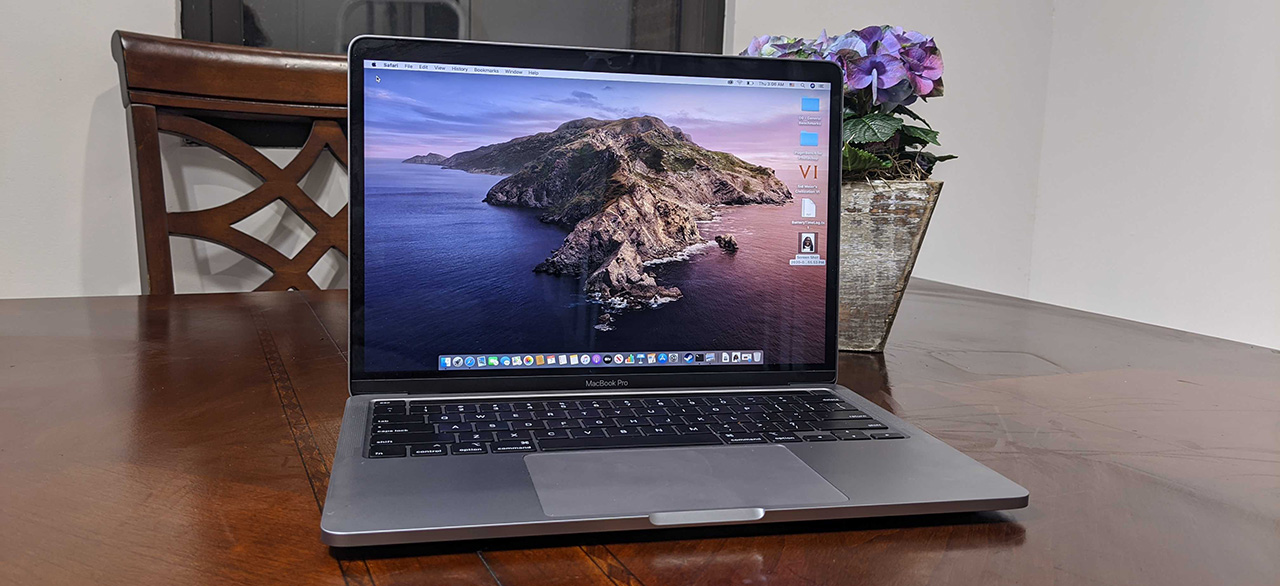Laptop Mag Verdict
The MacBook Pro offers double the storage with great performance and the excellent Magic keyboard, but the battery life could be longer.
Pros
- +
Elegant design
- +
Solid performance
- +
Great keyboard
- +
Excellent SSD speeds
- +
Powerful speakers
Cons
- -
A bit heavy
- -
Thick bezels
- -
Battery life could be longer
Why you can trust Laptop Mag
If you’re looking for some mind-blowing generational technological advancement, the new 13-inch MacBook Pro is not for you. But if you’re looking for a laptop that’s undergone some necessary, incremental improvements, then you’re in the right place. The $1,799 MacBook Pro offers solid performance, a lighting-quick SSD and Apple’s ever elegant design. Plus, the company has closed the chapter on the Butterfly keyboard, bringing the fantastic Magic keyboard to the mix. Plus, you get double the storage. It’s not the jaw-dropping change you want, but the experience elevating change that MacBook fans need.

MacBook Pro pricing and availability
The base model of the MacBook Pro is currently available for $1,299 and has a 1.4GHz quad-core 8th Gen Intel Core i5 processor with 8GB of RAM, a 256GB SSD and an Intel Iris Plus Graphics 645 GPU. You can configure it up with up to an 8th Gen Core i7 CPU, 16GB of RAM and a 2TB SSD.
I took the $1,799 iteration for a spin, which has a 2-GHz Intel quad-core 10th Gen Intel Core i5 processor with 16GB of RAM, a 512GB SSD and an Intel Iris Plus Graphics GPU. This model can also be configured out the wazoo with up to a 10th Gen Core i7 CPU, 32GB of RAM and a 4TB SSD.
The pricing for each configuration hasn’t changed, but the storage amount has. For the price, Apple is giving you double the storage of previous versions. The company also upped the ante on the RAM, allowing consumers to configure it with up to a generous 32GB. And as usual, each MacBook config gets a $100 discount for those in the education sector.
Price: $1,799
CPU: Intel Core i5-1030NG7
GPU: Intel Iris Plus
RAM: 16GB
Storage: 512GB
Display: 13.3-inch, 2560 x 1600
Battery: 10:21
Size: 12 x 8.4 x 0.6 inches
Weight: 3.1pounds
MacBook Pro design
Call it a game of deja vu. The latest MacBook Pro looks exactly like its predecessor, which is fine. Although I was hoping for somewhat of a change, like thinner bezels or new colors. But no, the MacBook retains the elegant, familiar looks of the previous notebooks. You have your all-aluminum Space Gray chassis that is also available in Silver.
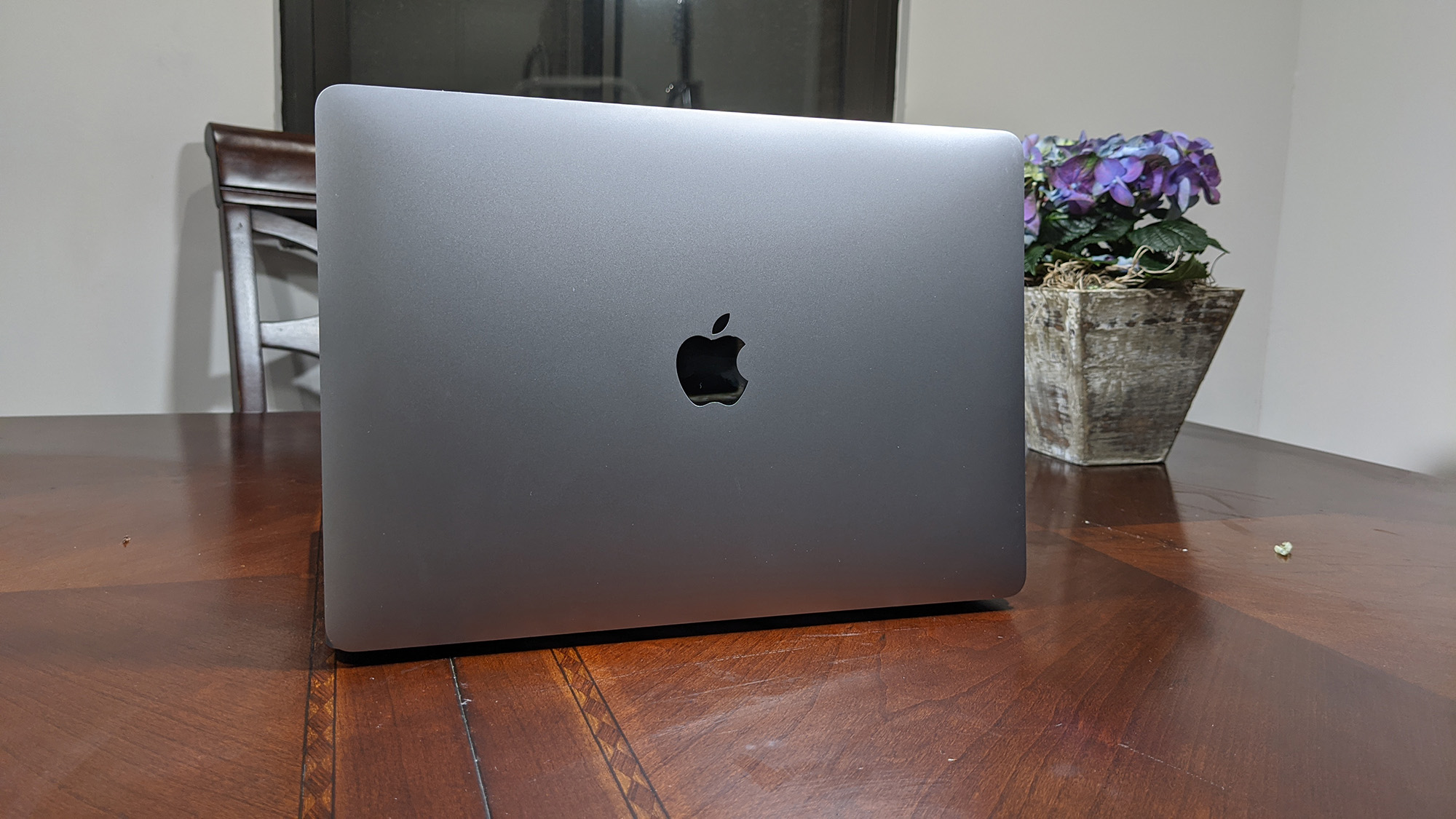
Open the laptop and you're greeted by the massive Force Trackpad, which sits directly below the keyboard. Above that, you’ll find the Touch Bar with the power button/Touch ID to the far right. And speaking of the keyboard, it’s been replaced with the Magic keyboard, closing the chapter on the Butterfly keyboard (more on that later).
The MacBook Pro (12 x 8.4 x 0.6 inches) is a little on the heavy side, at 3.1 pounds. Both the HP Spectre x360 (2.7 pounds, 12.1 x 7.7 x 0.7 inches) and Dell XPS 13 (2.8 pounds, 11.6 x 7.8 x 0.6 inches) are a good deal lighter.
Sign up to receive The Snapshot, a free special dispatch from Laptop Mag, in your inbox.
MacBook Pro ports
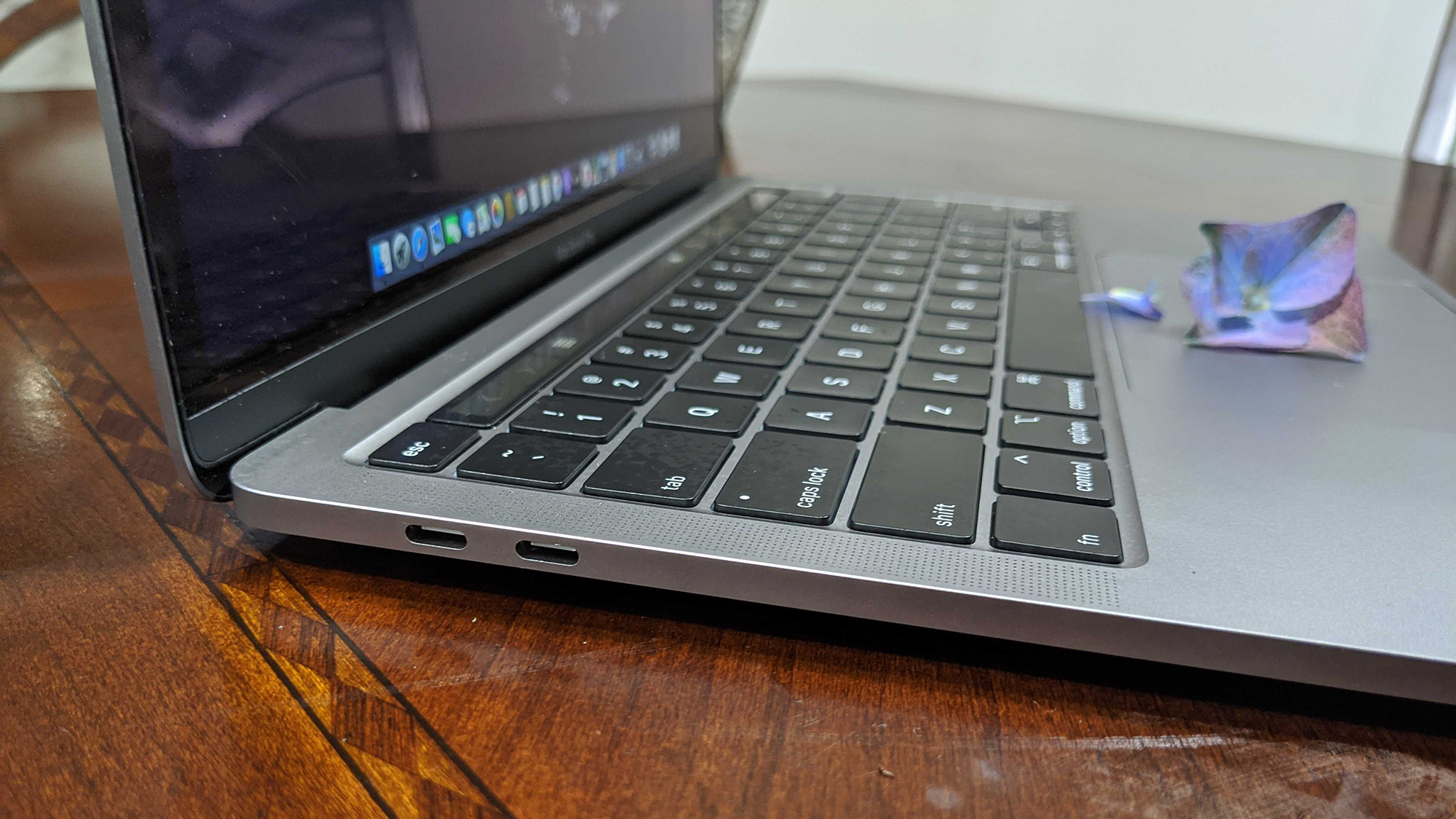
The MacBook doesn’t have any legacy ports, but it makes up for it with Thunderbolt 3 ports –– four of them to be exact. There are two on each side with a headset jack on the right.
MacBook Pro display
Apple knows how to make a pretty screen, which is why every system, including this one, has a 2560 x 1600-pixel Retina display. The 13.3-inch panel is beautiful on its own, but like other modern MacBooks, this Pro has True Tone, a utility that, when enabled, automatically adjusts the color temperature based on the environment so you can enjoy optimal hues whether you’re in natural or fluorescent lighting or in a darkened room.
When I watched the trailer for Bad Trip, I was enraptured by the Pepto Bismol pink Ford Taurus actor Erik Andre was working on. Details were sharp enough that I could see the individual sparks flying as he placed the jumper cables on the wrong portion of the car’s engine.
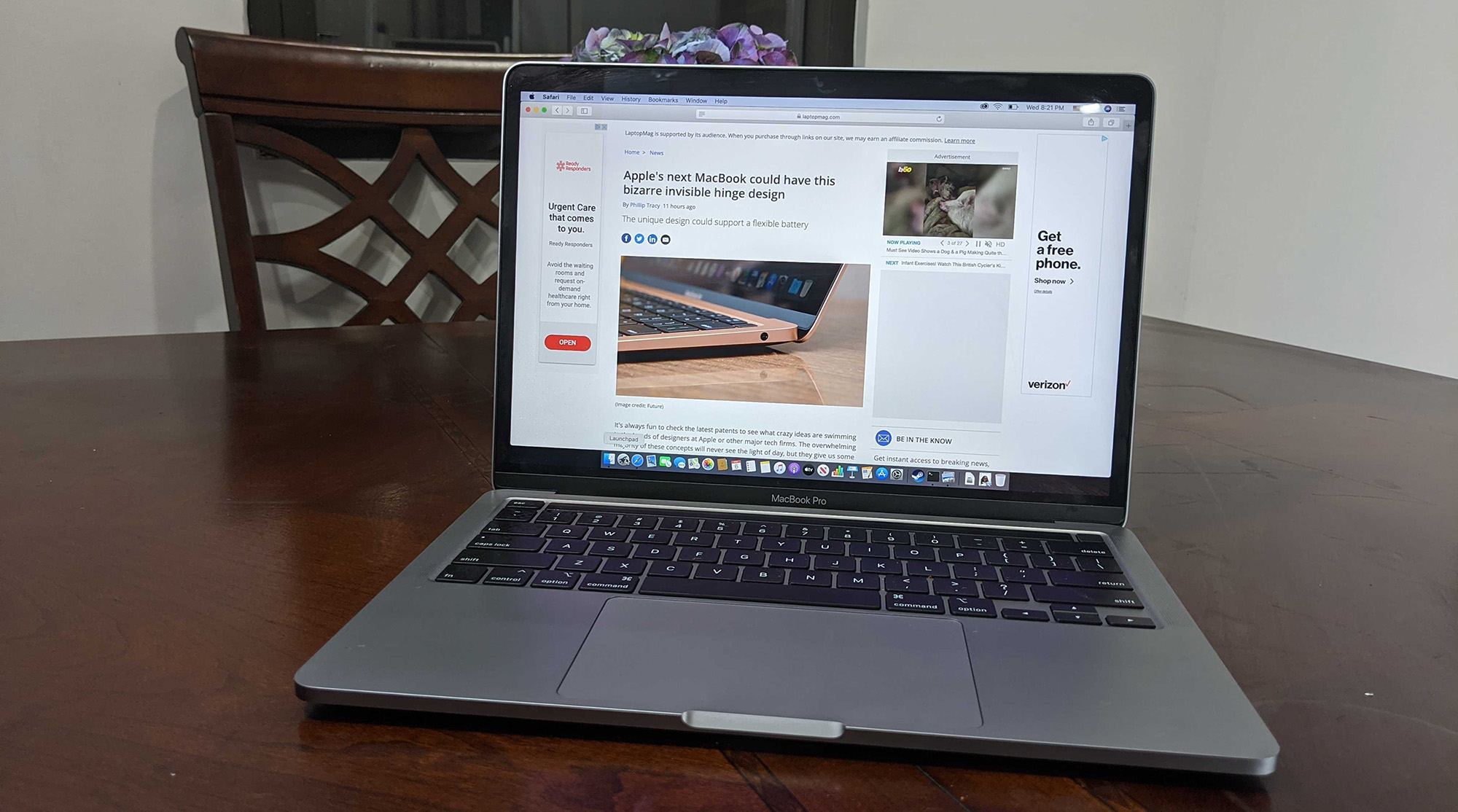
I was surprised to discover that, at 114%, the MacBook Pro was below the 124% sRGB color gamut average for premium laptops. It was more vivid than the Spectre’s 109%, but just behind the XPS 13’s 115%.
The MacBook Pro makes up for its lack of vividness with impressive brightness. The laptop’s panel averaged 485 nits, surpassing the 370-nit category average as well as the XPS 13 (417 nits) and the Spectre x360 (369 nits).
I have to say, I’m more than disappointed that Apple didn’t do anything to shrink those chunky bezels. In this day and age, when the Dell XPS 13 has eliminated all the bezels, Apple is still holding on to these incredibly thick borders. If Apple could shrink those bezels, they could fit a much larger screen into that small chassis, which would win the company much acclaim. Especially since a lot of people were counting on a 14-inch MacBook. Oh well, better luck next time.
MacBook Pro audio
It’s not the six booming speakers on the 16-inch MacBook Pro, but this 13-inch notebook can get plenty loud. My small living/dining room was filled with warm, balanced audio when I listened to Tony! Toni! Tone! play “Whatever You Want.” The bass was rich, the synths were measured, the drums were nice and crisp, and the vocals floated gently through it all.
MacBook Pro keyboard and touchpad
So, about that keyboard. After vocal consumer complaints, Apple has finally parted ways with the uncomfortable Butterfly keyboard in favor of the Magic Keyboard. It’s clicky with firm feedback, making for a very comfortable typing experience. I cruised past my typical 70 words-per-minute typing average on the 10fastfingers test, reaching 76 wpm.
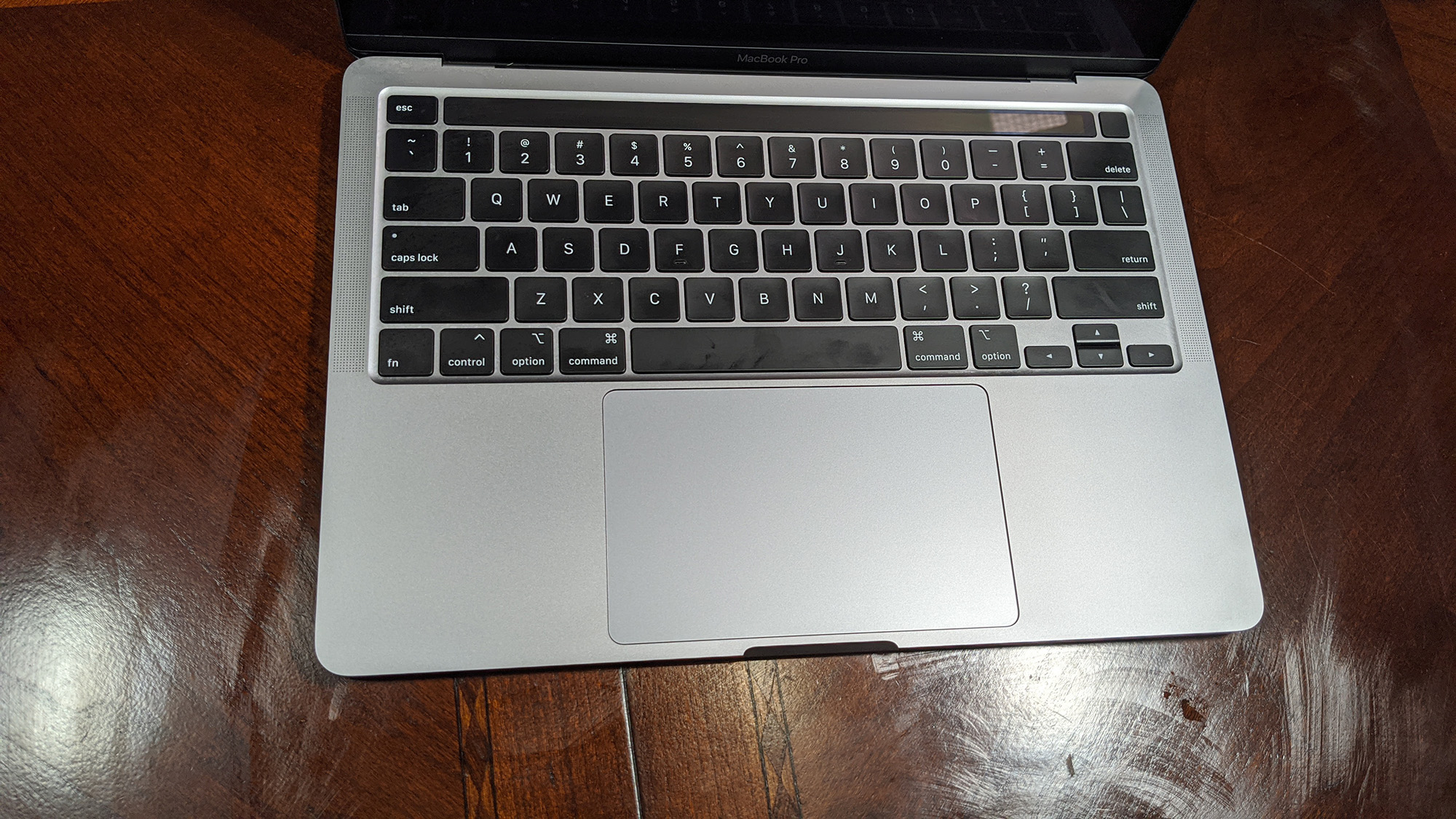
As expected, the MacBook is outfitted with a massive Force trackpad. At 4.4 x 2.6 inches, I never had to worry about running out of space to navigate. And although my palms inadvertently came in contact with the trackpad, the cursor maintained its position thanks to the excellent palm rejection. The edges of the trackpad have firm feedback when you’re right or left-clicking.
MacBook Pro performance
The MacBook Pro is armed with a 2-GHz Intel Core i5-1030NG7 processor with 16GB of RAM. The laptop chewed through 30 open tabs of Google Chrome while I watched Black Butler on Netflix.
The laptop fared pretty well on our synthetic benchmarks. When we ran the Geekbench 5.0 test, an overall performance benchmark, the MacBook achieved 4,399, sailing past the 4,171 premium laptop average. It also beat the Spectre and its Core i7-1065G7 CPU, which scored 4,074. However, it was no match for the XPS 13 (Core i7-1065G7 CPU), which hit 4,648.
During the Handbrake video transcoding test, the MacBook turned a 4K video to 1080p in 12 minutes and 43 seconds. It was much faster than the 18:52 average. The XPS 13 was a close second at 15:40, while the Spectre completed the task in 21:13. That’s impressive since both the Dell and the HP have Core i7 processors compared with the MacBook’s Core i5 CPU.
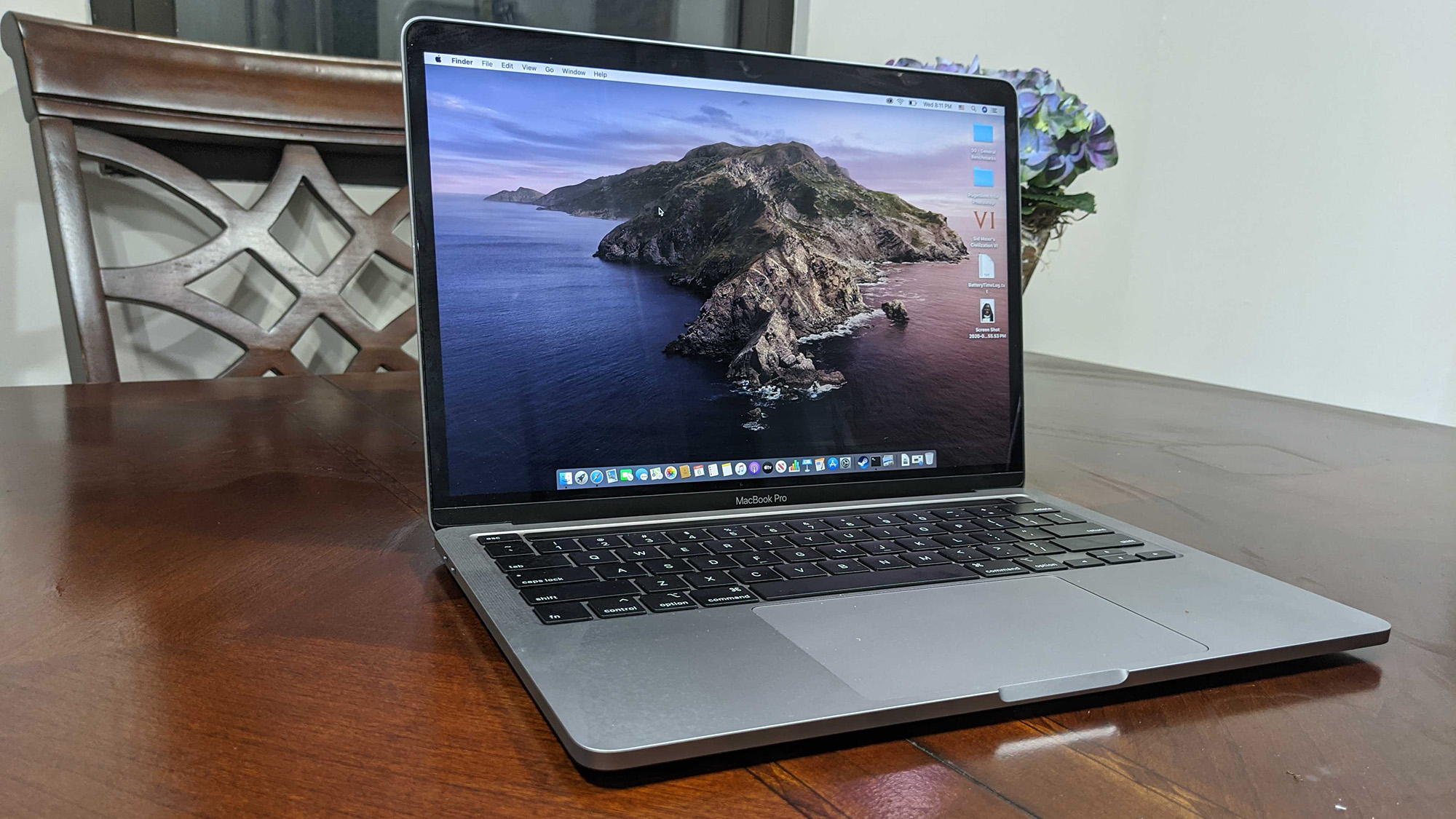
We also ran the PugetBench Photoshop benchmark, which loops through 21 different photoshop tasks three times per run. The MacBook Pro hit a score of 569, beating the 553 average. However, it wasn’t enough to topple the XPS 13, which reached 657.
On the Blackmagic benchmark, the MacBook’s 512GB SSD had a read time of 2,060.2 megabytes per second, shattering the 1,421.9MBps average. It also crushed the 1,198.7MBps write average with a blistering score of 2,315.9MBps.
Equipped with an integrated Iris Plus Graphics, the laptop won’t be playing any graphics-intensive games, but it can still do some video and photo editing. The MacBook Pro reached 18 frames per second on the Sid Meyer Civilization VI: Gathering Storm test. That was enough to defeat the 13-fps category average, but not the XPS 13’s 19 fps.
MacBook Pro battery life
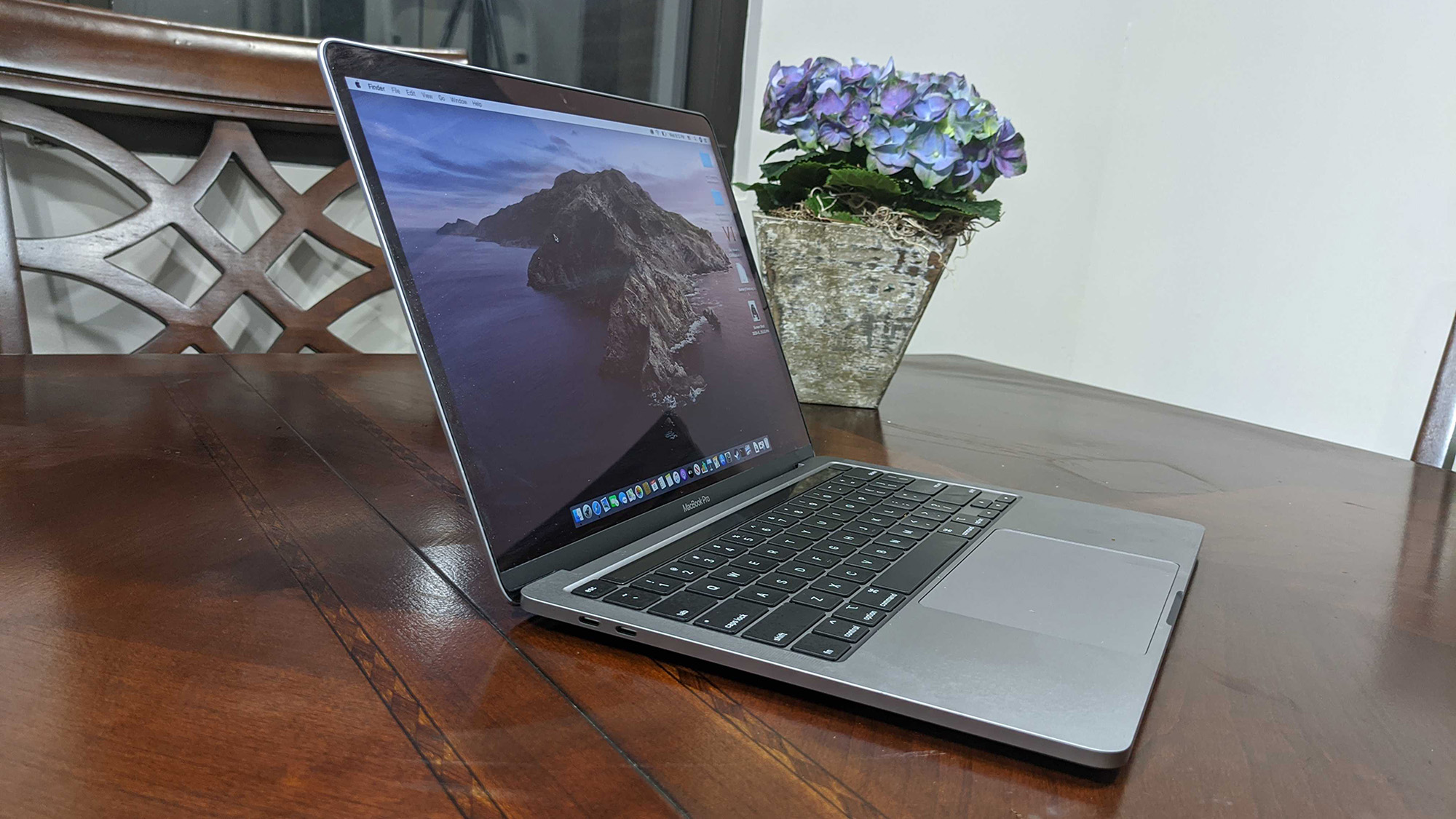
The MacBook Pro delivers all-day performance, lasting 10 hours and 21 minutes on the Laptop Mag Battery Test (continuous web surfing over Wi-Fi at 150 nits of brightness). That’s longer than the 9:05 premium laptop average. However, it’s nowhere near as long as the XPS 13 and Spectre, which clocked times of 12:39 and 13:19, respectively.
MacBook Pro heat
The MacBook Pro is one cool customer. After 15 minutes of running a fullscreen HD video, we measured several locations on the laptop. The touchpad measured a brisk 79 degrees Fahrenheit. The center of the keyboard and bottom of the system measured 86 and 91 degrees, respectively, both of which are below our 95-degree comfort threshold. The hottest point of the laptop, right above the heat vents, was only slightly above the threshold, at 96 degrees.
MacBook Pro webcam
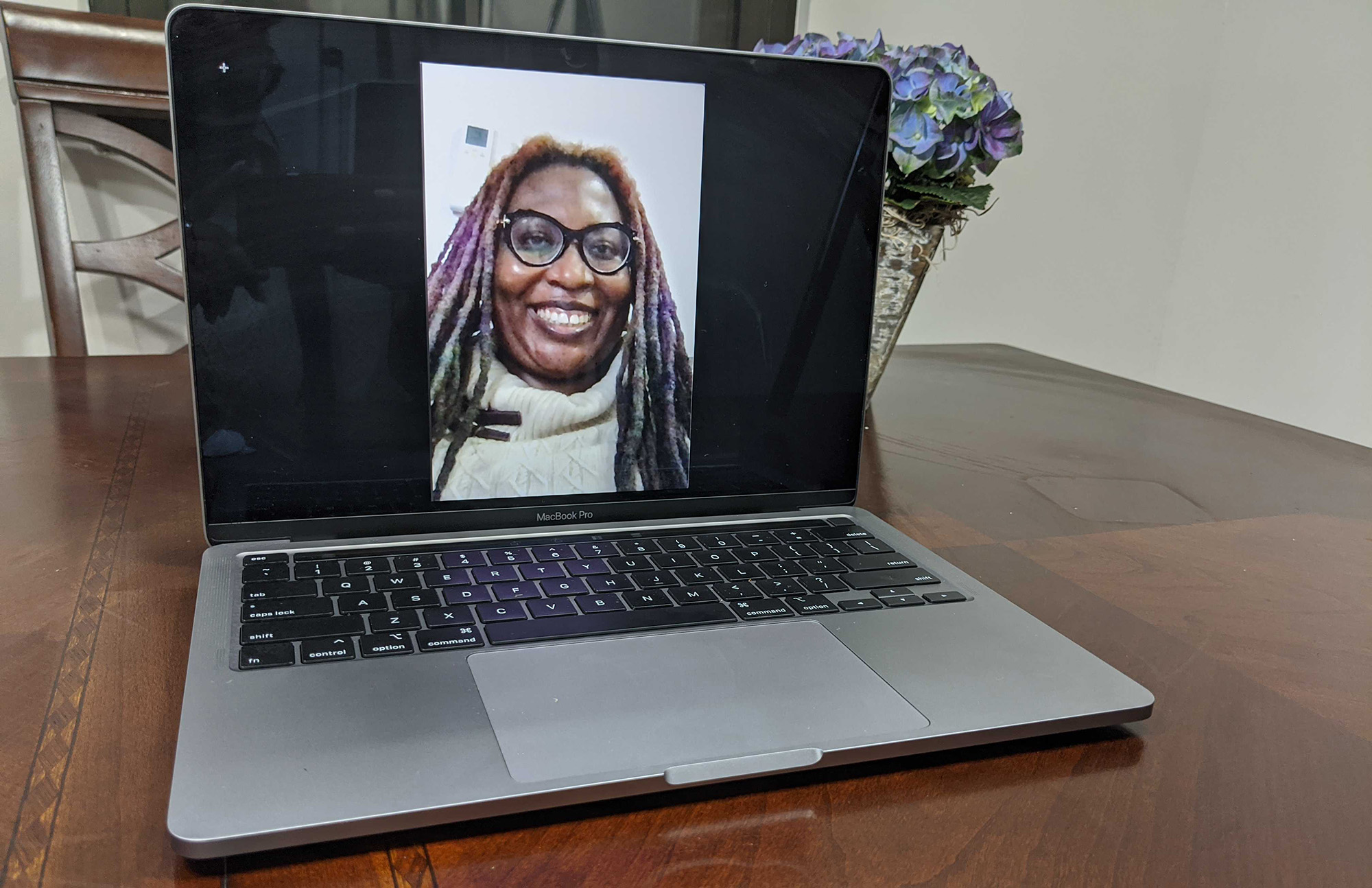
The 720p webcam on the MacBook is great for video conferencing. The camera did a great job of capturing my complexion as well as the raised ridges in my white sweater. It did however, blow out the white wall behind me, but overall, it’s a serviceable shooter.
MacOS Catalina
Like most modern MacBooks, the Pro runs on macOS Catalina. In the interest of unification, Apple has killed iTunes in favor of Music, Podcasts and TV. The interface is iTunes-reminiscent with the navigation menu on the left, controls at the top, and the content in list/icon form on the rest of the screen. In practice, it’s a very smooth experience.

And while I’m not a big Safari user, I like what Catalina brings to the table. It helps you avoid opening redundant tabs and assists in creating stronger passwords. The new tab screen now shows iCloud tabs and Siri Suggestions. System Preferences has been retooled to fit all of your Apple ID information, allowing you to manage your connected devices, contact info, password and more.
One thing I’ll always appreciate about macOS is the lack of bloatware. Outside of essentials like Safari, Photos and the App Store, you’re not going to see much flotsam.
The MacBook Pro comes with a 1-year limited warranty. See how Apple fared in Tech Support Showdown and Best and Worst Brands, our annual special reports.
Bottom line
OK, Apple didn’t make any monumental changes to the MacBook Pro this time around. But it did address a couple of customer concerns that are sure to make the MacBook-loving populace stand up and cheer. Not only did Apple double the maximum storage and RAM, but it also put the final nail in the Butterfly keyboard’s coffin, paving the way for the comfort of the Magic keyboard. Toss in an incredibly fast SSD and you’ve got a winner –– all for $1,799.
However, if you’re looking for more battery life, a slightly more vivid display and better performance, the $1,749 Dell XPS 13 is the way to go. Overall, with its seemingly minor improvements, the 13-inch MacBook Pro is sure to be a crowd pleaser with students or creative professionals.

Sherri L. Smith has been cranking out product reviews for Laptopmag.com since 2011. In that time, she's reviewed more than her share of laptops, tablets, smartphones and everything in between. The resident gamer and audio junkie, Sherri was previously a managing editor for Black Web 2.0 and contributed to BET.Com and Popgadget.
